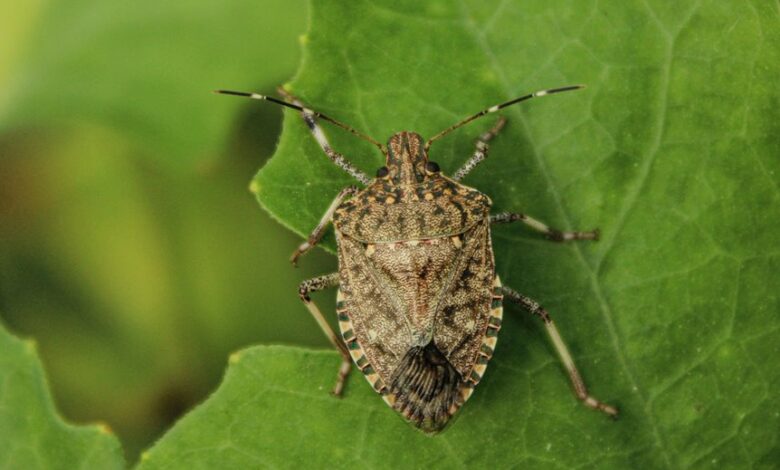Hetero Meaning in Biology: What Does It Really Mean and Why It Matters

The prefix “hetero” plays a significant role in biology, indicating concepts of diversity and difference among living organisms. This term is foundational in various biological contexts, such as genetic variation and nutritional strategies. Understanding its implications can reveal insights into ecosystem dynamics and organismal adaptability. However, the complexities associated with “hetero” extend beyond simple definitions, inviting further exploration into its broader significance in biological discussions.
Understanding the Prefix “Hetero”
The prefix “hetero” derives from the Greek word “heteros,” meaning “other” or “different.”
In biological contexts, this prefix is utilized to describe organisms, cells, or structures that exhibit variations or differences from a baseline or typical form.
Common hetero examples include heterozygous genotypes and heterotrophic organisms, illustrating the diverse applications of hetero prefixes in conveying biological diversity and complexity.
Heterozygosity: The Genetic Perspective
Heterozygosity refers to the presence of different alleles at a specific gene locus within an organism’s genotype.
This genetic variation is crucial for evolutionary processes, as it enhances the adaptability of populations to changing environments.
Furthermore, higher levels of heterozygosity are often associated with increased genetic diversity, which can be vital for population resilience and long-term survival.
Definition of Heterozygosity
Genetic variation within a population is often characterized by the concept of heterozygosity, which refers to the presence of different alleles at a specific locus on homologous chromosomes.
This genetic diversity contributes to variations in allele frequency, impacting traits and overall adaptability.
Heterozygosity serves as a crucial indicator of a population’s health, resilience, and potential for evolutionary change within changing environments.
Importance in Evolution
While genetic variation is essential for the adaptability of species, heterozygosity plays a pivotal role in the evolutionary process.
It enhances the potential for adaptive radiation by providing a reservoir of traits that can be selected for in changing environments. This genetic variation fosters resilience, allowing populations to thrive amidst ecological shifts and ensuring the continuity of diverse life forms across generations.
Implications for Genetic Diversity
Understanding the implications of heterozygosity on genetic diversity reveals its critical role in maintaining the health and adaptability of populations.
Increased genetic variability fosters resilience against environmental changes, providing evolutionary advantages that enhance survival.
Populations with higher heterozygosity are better equipped to adapt, ensuring long-term viability.
Thus, heterozygosity is essential for sustaining biodiversity and promoting the overall stability of ecosystems.
Heterotrophs vs. Autotrophs: Nutritional Strategies in Ecology
Nutritional strategies in ecology are fundamentally categorized into two primary groups: heterotrophs and autotrophs.
Heterotroph examples, such as animals and fungi, acquire energy by consuming organic matter, while autotroph adaptations enable organisms like plants and certain bacteria to synthesize their own food through photosynthesis or chemosynthesis.
This distinction is crucial for understanding ecological interactions and the flow of energy within ecosystems.
The Role of Heterochromatin in Gene Regulation
Heterochromatin plays a crucial role in gene regulation through its structural characteristics and functional mechanisms.
This highly condensed form of chromatin is associated with gene silencing, effectively preventing transcription of specific genes.
Understanding the diverse mechanisms by which heterochromatin influences gene expression is essential for comprehending its impact on cellular function and development.
Heterochromatin Structure and Function
While often overlooked in discussions of chromatin dynamics, heterochromatin plays a critical role in the regulation of gene expression and maintaining genomic stability.
Its organization is essential for effective chromatin remodeling, influencing how genes are accessed or silenced.
Gene Silencing Mechanisms Explained
Gene silencing is a sophisticated process that plays a pivotal role in regulating gene expression, particularly through the actions of heterochromatin.
This mechanism involves various factors, including RNA interference, which mediates the degradation of specific RNA molecules, thereby preventing translation.
Heterochromatin’s structural properties enhance the repression of gene expression, ensuring that only necessary genes are activated, contributing to cellular identity and function.
Heterogeneity in Biological Populations
Biological populations exhibit a remarkable degree of heterogeneity, characterized by variations in genetic, phenotypic, and ecological traits among individuals. This heterogeneity enhances population diversity, contributing to ecological stability and species adaptability. Genetic variation serves as a cornerstone for evolutionary fitness, while adaptation mechanisms and trait distribution foster environmental resilience.
| Trait Type | Example | Importance |
|---|---|---|
| Genetic Variation | Allele diversity | Increases adaptability |
| Phenotypic Variation | Morphological traits | Enhances survival strategies |
| Ecological Traits | Habitat preferences | Supports ecosystem balance |
| Behavioral Traits | Foraging strategies | Improves resource utilization |
| Reproductive Traits | Mating systems | Influences population growth |
The Importance of “Hetero” in Scientific Communication
The term “hetero” plays a crucial role in scientific communication, particularly in the fields of biology and ecology.
Its significance is underscored by the following points:
- Enhances scientific accuracy in research.
- Promotes communication clarity among scientists.
- Facilitates interdisciplinary collaboration.
- Aids in the understanding of complex biological concepts.
Thus, “hetero” serves as a vital linguistic tool in conveying precise scientific information.
Conclusion
In conclusion, the prefix “hetero” encapsulates a fundamental principle of diversity in biology, manifesting in genetic variability, nutritional strategies, and gene regulation. The implications of heterogeneity extend beyond individual organisms to entire ecosystems, fostering resilience and adaptability. By understanding the diverse roles of “hetero,” scientists can enhance their communication and deepen their insights into the complexities of life. This exploration reveals that embracing diversity is not merely a scientific concept but a crucial element for sustaining ecological balance and evolutionary success.




